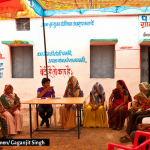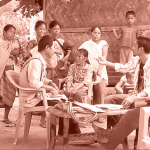
Do Gram Panchayats get their money?
27 April 2012
It was exactly nineteen years ago, on April 24, 1993, that the Constitution (73rd Amendment Act), 1992, came into force. Two decades have passed since then but efforts to devolve real powers to the Panchayati Raj Institutions (PRIs) have been limited. Various reports have indicated that fiscal devolution has lagged behind functional devolution, making the latter meaningless. Fiscal devolution is further hampered by severe delays and unpredictability in fund flows to PRIs, implying that PRIs do not receive their allocated budgetary provisions. Further, they have little autonomy over their finances as the bulk of the funds received are tied to clearly-specified expenditure guidelines. The inefficiencies are exacerbated by the lack of regular and reliable data on Panchayat finances. The 13th Finance Commission notes that data provided to the Commission from state governments was sparse and inconsistent with data furnished to previous Commissions.
In this context, our study, Do Gram Panchayats Get Their Money? PAISA Report, assumes considerable significance. The study asks, and attempts to answer, the following key questions:
- Do Gram Panchayats (GPs) get their money? That is, do GPs receive funds allocated to them through various funding sources?
- If so, do GPs get their entire entitlement?
- When do GPs receive their funds? That is, do funds arrive on time?
- Do GPs spend their money?
- If so, what do GPs spend their money on? And does this expenditure reflect local needs and priorities?
GPs are the last unit of governance in the PRI system. This is the point at which expenditures on the actual provision of services to citizens are incurred. Hence, we focus on GP-level fund flows and expenditures; more specifically, on untied funds, which constitute only around 10% of total GP allocations. Though small in size, untied funds are the only discretionary funds available to GPs.1 These funds can potentially be utilized to fulfil local needs and priorities as and when they are felt, thereby fulfilling the raison d’être of decentralization.
The analysis and results in this study are based on a random sample of 20 GPs in Birbhum district of West Bengal. These GPs received three types of untied funds: 12th Finance Commission (TFC) grants; 2nd State Finance Commission (2nd SFC) grants; and funds provided under the Backward Regions Grant Fund (BRGF) programme. We have tracked these funds over a five-year period, 2005-06 to 2009-10.
We find that the sample GPs received 70% of their untied fund entitlement: 55% of their 2nd SFC entitlement and 61% of their BRGF entitlement; TFC performed best with GPs receiving 94% of their entitlement. Further, there are year-to-year fluctuations in fund receipts. TFC and BRGF were slow starters, with GPs receiving less than their entitlement in initial years of the period under consideration. On the other hand, SFC performed better in 2005-06 and slipped in later years.
Apart from low receipts, fund flows are also characterized by delays and irregularities. The first TFC instalment was released in October 2005 – beginning of the third quarter of the financial year, creating a vicious cycle of delays for the entire fund cycle. The State, once it had received funds from the Centre, was quick to release the TFC funds to districts and, yet, GPs received their entitlements nearly four months from the date of release by the State. SFC had a good start, with GPs receiving both instalments for 2005-06 on time. But only five instalments were issued in the next four years, instead of the stipulated eight. On average, it took two months for funds to reach GPs from the State. There were significant delays in BRGF as well, starting from Government of India (GoI) and flowing all the way down the chain to GPs. Overall, it took anywhere between 2.5 to 6 months for funds to reach GPs from GoI.
On average, GPs reported spending 64% of their untied funds. However, there seems to be a preference for spending tied funds: 80% of tied funds were spent by GPs in the sample. In addition to yearly fluctuations, there is substantial variation across fund type and across GPs in the sample. On average, 69% of TFC funds, 73% of SFC funds and only 53% of BRGF funds were spent.
The untied funds are spent mostly on activities related to the provision of drinking water and roads. A common thread across all GP expenditures is a preference for infrastructure-related and guideline-driven expenditure, which is ironic considering that these funds are meant to be ‘untied’. This is partly due to periodic guidelines issued by GoI and the Government of West Bengal (GoWB), leaving GPs with little to choose from. It is also an indicator of the weak planning capacity of GPs, which prefer to spend as per the guidelines.
Our analysis also throws some light on the specific points in the system where inefficiencies exist. An important, yet often-ignored, fact highlighted in the study is that there are significant bottlenecks at the district level, affecting the ability of the district to disburse funds to GPs.2 In West Bengal, these bottlenecks are exacerbated by poor record keeping at all levels. Accessing basic documents, such as allotment and sanction letters, was a challenge, even at the state and the district levels. At the GP-level, entries in cashbooks and project registers were often incomplete. Introduction of the Gram Panchayat Management System (GPMS), a sophisticated accounting system, in 2007 has improved record-keeping post 2007-08. However, data generated through GPMS is not networked to higher levels in the system, thereby limiting its usefulness in improving the overall Panchayat finance system.
Interactions with officers across various levels of government highlighted a variety of factors for such a state of affairs. These include the following: low priority accorded to Panchayat finances; cumbersome procedures, including negotiating with different levels of government to access funds released, managing multiple bank accounts and reporting requirements at the district- and GP-level; complex conditionalities, including the submission of utilization certificates to access funds, and limited staff capacity. Together, these factors contribute to process inefficiencies in Panchayat finances.
The study also highlights some key areas of reform that could help to strengthen the state of Panchayat finances in West Bengal. These include: improvements in record-keeping such that there is greater transparency, which in turn enables real-time tracking and monitoring of GP funds; simplifying transactions so that cumbersome procedures and other process-related delays can be curtailed; finally, transitioning to a ‘Just-in-Time’ fund flow system where GPs get funding based on their individual expenditure capacity, rather than on overall performance of a district. Such a system would help create positive incentives for improved planning and expenditures at the GP level.





